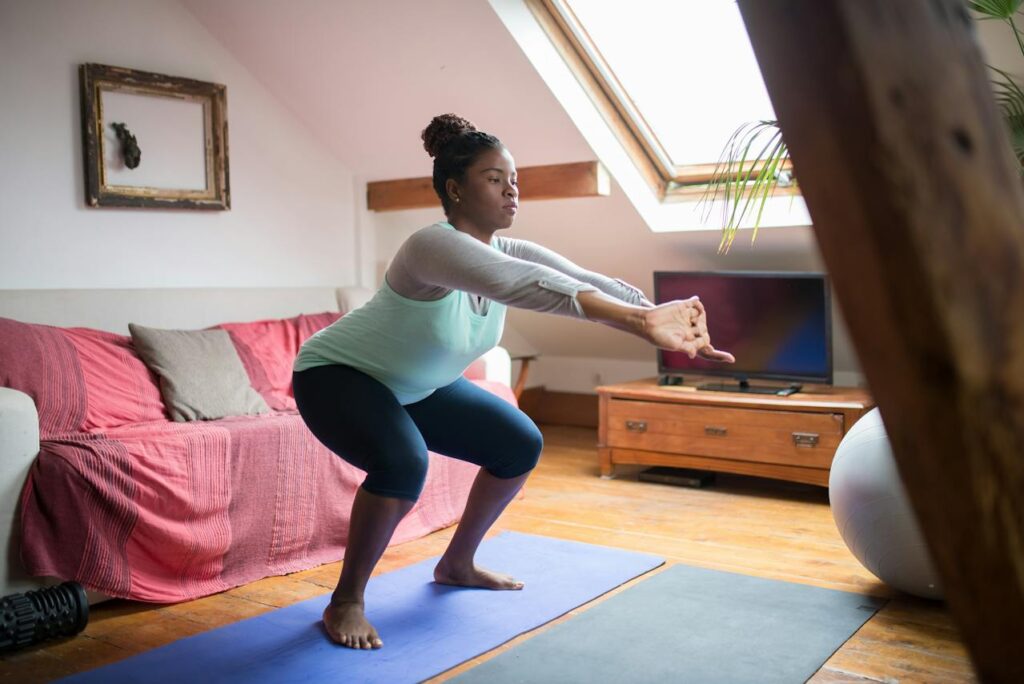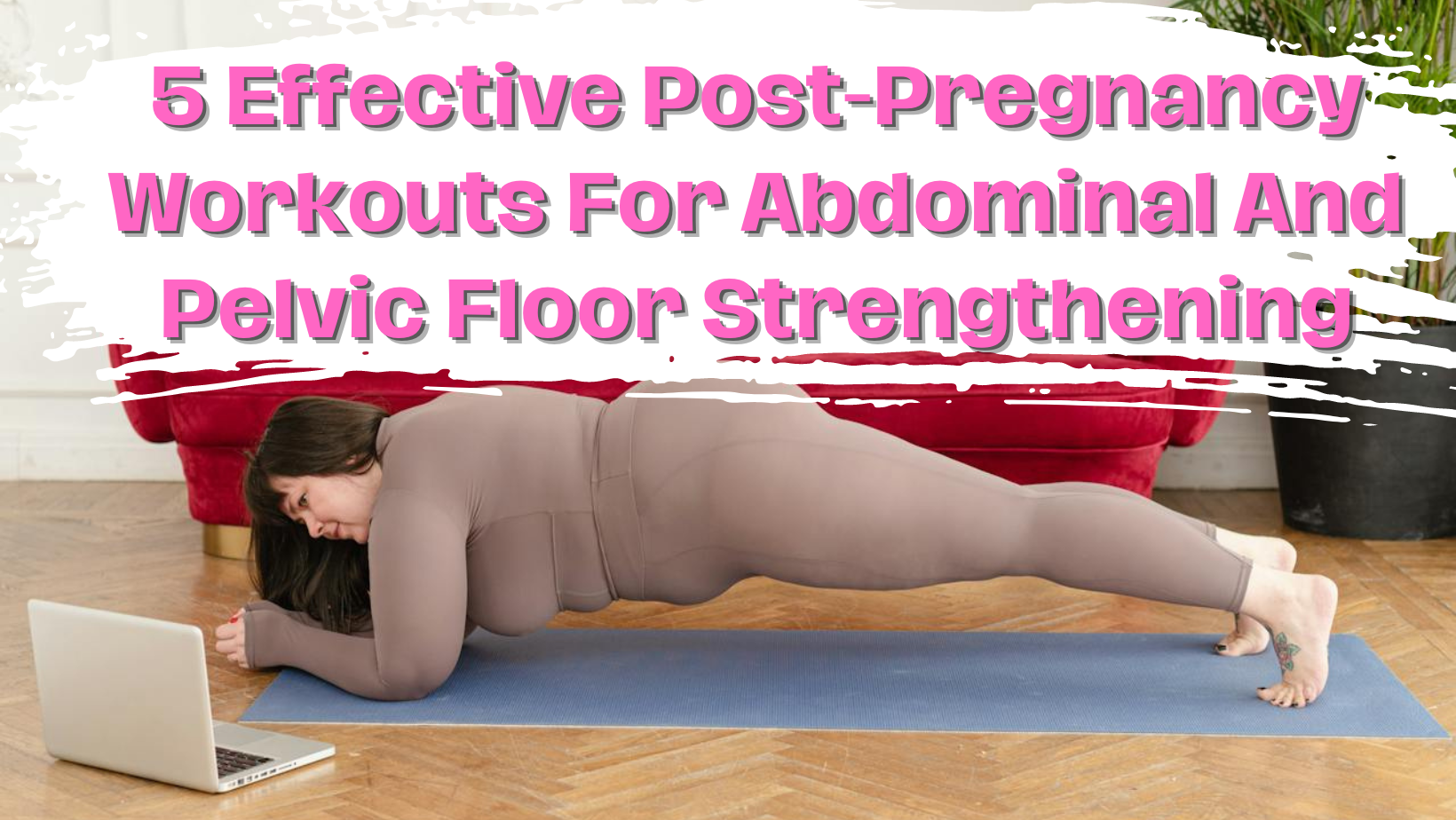Congratulations on your new addition to the family! If you’re looking for effective post-pregnancy workouts that target the abdomen and pelvic floor, we’ve got you covered. In this article, you’ll discover five fantastic exercises that will help strengthen these specific areas, bringing back strength and stability after giving birth. So, say goodbye to those post-pregnancy woes and hello to a healthier and stronger you!
Exercises for Abdominal Strengthening
1. Diaphragmatic Breathing
Diaphragmatic breathing is an excellent exercise for strengthening your abdominal muscles post-pregnancy. To practice diaphragmatic breathing, lie down on your back with your knees bent and feet flat on the ground. Place one hand on your chest and the other on your belly. Take a deep breath in through your nose, allowing your belly to rise and expand. As you exhale through your mouth, feel your belly gently contract. This exercise helps engage the deep abdominal muscles and promote core stability.
2. Pelvic Tilt
Engaging your abdominal muscles with pelvic tilt exercises is an effective way to strengthen your core and improve posture after giving birth. Begin by lying on your back with your knees bent and feet flat on the floor. Gently tilt your pelvis up towards your belly button, engaging your lower abdominal muscles. Hold this position for a few seconds before releasing and repeating the exercise. Pelvic tilts help activate the muscles in your lower abdomen, which can assist in toning and tightening the area.
3. Transverse Abdominis Activation
The transverse abdominis is a deep abdominal muscle that plays a vital role in core stability. To activate this muscle, start by lying on your back with your knees bent and feet flat on the floor. Place your hands on your lower abdomen, just above the pubic bone. Take a deep breath in, and as you exhale, gently draw your belly button towards your spine. Imagine pulling your abdominal muscles inward, engaging the transverse abdominis. Hold this contraction for a few seconds before releasing. Repeat this exercise several times to strengthen your transverse abdominis muscles.
4. Plank
Planks are an excellent exercise for overall core strength, including the abdominals. Begin in a push-up position, supporting your body weight on your forearms and toes. Keep your body in a straight line from your head to your heels, engaging your core muscles. Hold this position for as long as you can maintain proper form, aiming for at least 30 seconds to start. Planks are a challenging but highly effective exercise for toning and strengthening the abdominal muscles.
5. Supine Leg Raises
Supine leg raises are an effective exercise to target the lower abdominal muscles. Lie down on your back with your legs extended straight out in front of you. Place your hands underneath your glutes for support. Keeping your legs straight, slowly raise them towards the ceiling, engaging your lower abdominal muscles. Lower your legs back down to the starting position in a controlled manner. Repeat this movement for several repetitions, focusing on maintaining proper form and engaging your core throughout the exercise.
Exercises for Pelvic Floor Strengthening
1. Kegels
Kegels are the go-to exercise for strengthening the pelvic floor muscles after pregnancy. To perform a Kegel exercise, imagine you are trying to stop the flow of urine midstream. Contract the muscles you would use for this action, focusing on the sensation of lifting and squeezing the pelvic floor. Hold the contraction for a few seconds before releasing. Aim to repeat this exercise for about 10 repetitions several times a day to effectively strengthen the pelvic floor muscles.
2. Bridge Pose
Bridge pose is a wonderful exercise for engaging the pelvic floor muscles while also targeting the glutes and lower back. Start by lying on your back with your knees bent and feet flat on the ground, hip-width apart. Place your arms alongside your body. Press your feet into the floor, engage your glutes, and lift your hips towards the ceiling. Hold this position for a few seconds before slowly lowering your hips back down. Repeat the bridge pose for several repetitions, focusing on engaging your pelvic floor muscles throughout the exercise.
3. Squats
Squats are a functional exercise that not only targets the legs but also engages the pelvic floor muscles. Stand with your feet shoulder-width apart and toes pointing slightly outwards. Lower your body down as if you were sitting back into a chair, keeping your weight in your heels. Make sure your knees stay aligned with your toes and your back remains straight. As you push back up to the starting position, squeeze your glutes and engage your pelvic floor muscles. Repeat this exercise for several repetitions, gradually increasing the number as your strength improves.

4. Dead Bug
The dead bug exercise is a fantastic way to strengthen both your abdominals and pelvic floor muscles. Begin by lying on your back with your arms extended towards the ceiling and knees bent at a 90-degree angle. Slowly lower one arm back behind your head while simultaneously straightening the opposite leg, gently lowering it towards the ground without touching it. Engage your core and pelvic floor muscles to maintain stability and prevent your lower back from lifting off the floor. Return to the starting position and repeat on the other side. Alternate sides for several repetitions, focusing on maintaining proper form and engaging your pelvic floor throughout the movement.
You May Also Like
5. Pelvic Floor Ball Squeeze
Using an exercise ball can enhance the effectiveness of pelvic floor exercises. Sit on the exercise ball with your feet flat on the ground and hip-width apart. Slowly contract your pelvic floor muscles, as if you are trying to lift the ball off the ground. Hold the contraction for a few seconds before releasing and relaxing. Repeat this exercise for several repetitions, gradually increasing the duration of each contraction. The exercise ball adds an element of instability, challenging your pelvic floor muscles to work harder and become stronger.
Incorporating these exercises into your post-pregnancy workout routine can help you regain strength and stability in your abdominal and pelvic floor muscles. Remember to start slowly and listen to your body, gradually increasing the intensity and duration of each exercise as you become stronger. Consult with your healthcare provider before starting any new exercise program, especially if you had a complicated pregnancy or delivery. By staying consistent and patient, you can achieve a toned and strong core, supporting your overall postpartum recovery.




